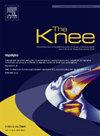无图像机器人手术和个性化方法:优化ACL重建后TKA。
IF 2
4区 医学
Q3 ORTHOPEDICS
引用次数: 0
摘要
背景:前交叉韧带重建(ACLR)增加了膝关节骨性关节炎(OA)的风险,需要全膝关节置换术(TKA),并发症发生率增加。这项前瞻性研究的目的是评估无图像机器人手术和个性化方法在先前ACLR后TKA中的作用。方法:这项前瞻性研究纳入了70例原发TKA患者:35例既往ACLR, 35例原发OA。所有手术均使用无图像机器人系统进行。对人口统计学、术中和术后数据进行分析,包括膝关节功能(ROM、KSS、WOMAC)、并发症和影像学结果。结果:尽管ACLR组术前最大屈曲度(p = 0.021)、kss -膝关节(p = 0.041)、kss -功能(p = 0.032)、womac -刚度(p = 0.017)和womac -功能(p = 0.035)的值显著降低,但两组术后结果相当,除了ACLR组膝关节屈曲度残余减少(114.41°vs 128.61°,p)。使用无图像机器人手术与个性化方法相结合,可以在ACLR后接受TKA的患者与原发性OA患者之间获得可比较的术后结果,同时也减少了有ACLR病史的患者与TKA相关的常见问题。总体结果表明,机器人辅助TKA对这些患者来说是一种安全有效的选择。证据等级:二级。本文章由计算机程序翻译,如有差异,请以英文原文为准。
Imageless robotic surgery and a personalized approach: optimizing TKA after ACL reconstruction
Background
Anterior cruciate ligament reconstruction (ACLR) increases the risk of knee osteoarthritis (OA) and the need for total knee arthroplasty (TKA), with an increased rate of complications. The aim of this prospective study is to evaluate the role of imageless robotic surgery and a personalized approach in TKA after prior ACLR.
Methods
This prospective study involved 70 patients who underwent primary TKA: 35 with prior ACLR and 35 with primary OA. All surgeries were performed using an imageless robotic system. Demographic, intraoperative, and postoperative data were analyzed, including knee function (ROM, KSS, WOMAC), complications, and radiographic outcomes.
Results
Despite significantly lower preoperative values in the ACLR group for maximum flexion (p = 0.021), KSS-knee (p = 0.041), KSS-function (p = 0.032), WOMAC-stiffness (p = 0.017), and WOMAC-function (p = 0.035), postoperative outcomes were comparable between the two groups, except for a residual reduction in knee flexion in the ACLR group (114.41° vs 128.61°, p < 0.001). Intraoperative adjustments were more frequent in the ACLR group, with a significantly higher rate of tibial recuts (20 % vs 2.8 %, p = 0.017). No major complications or revisions were reported at the three-year follow-up.
Conclusions
The use of imageless robotic surgery combined with a personalized approach can achieve comparable postoperative outcomes between patients undergoing TKA after ACLR and those with primary OA, while also reducing common issues associated with TKA in patients with a history of ACLR. The overall results indicate that robotic-assisted TKA is a safe and effective option for these patients.
Level of evidence
Level II.
求助全文
通过发布文献求助,成功后即可免费获取论文全文。
去求助
来源期刊

Knee
医学-外科
CiteScore
3.80
自引率
5.30%
发文量
171
审稿时长
6 months
期刊介绍:
The Knee is an international journal publishing studies on the clinical treatment and fundamental biomechanical characteristics of this joint. The aim of the journal is to provide a vehicle relevant to surgeons, biomedical engineers, imaging specialists, materials scientists, rehabilitation personnel and all those with an interest in the knee.
The topics covered include, but are not limited to:
• Anatomy, physiology, morphology and biochemistry;
• Biomechanical studies;
• Advances in the development of prosthetic, orthotic and augmentation devices;
• Imaging and diagnostic techniques;
• Pathology;
• Trauma;
• Surgery;
• Rehabilitation.
 求助内容:
求助内容: 应助结果提醒方式:
应助结果提醒方式:


